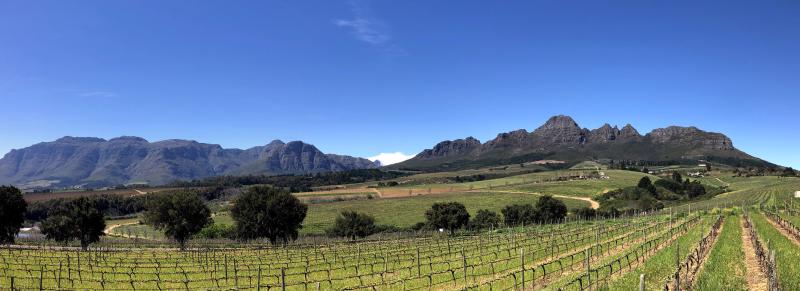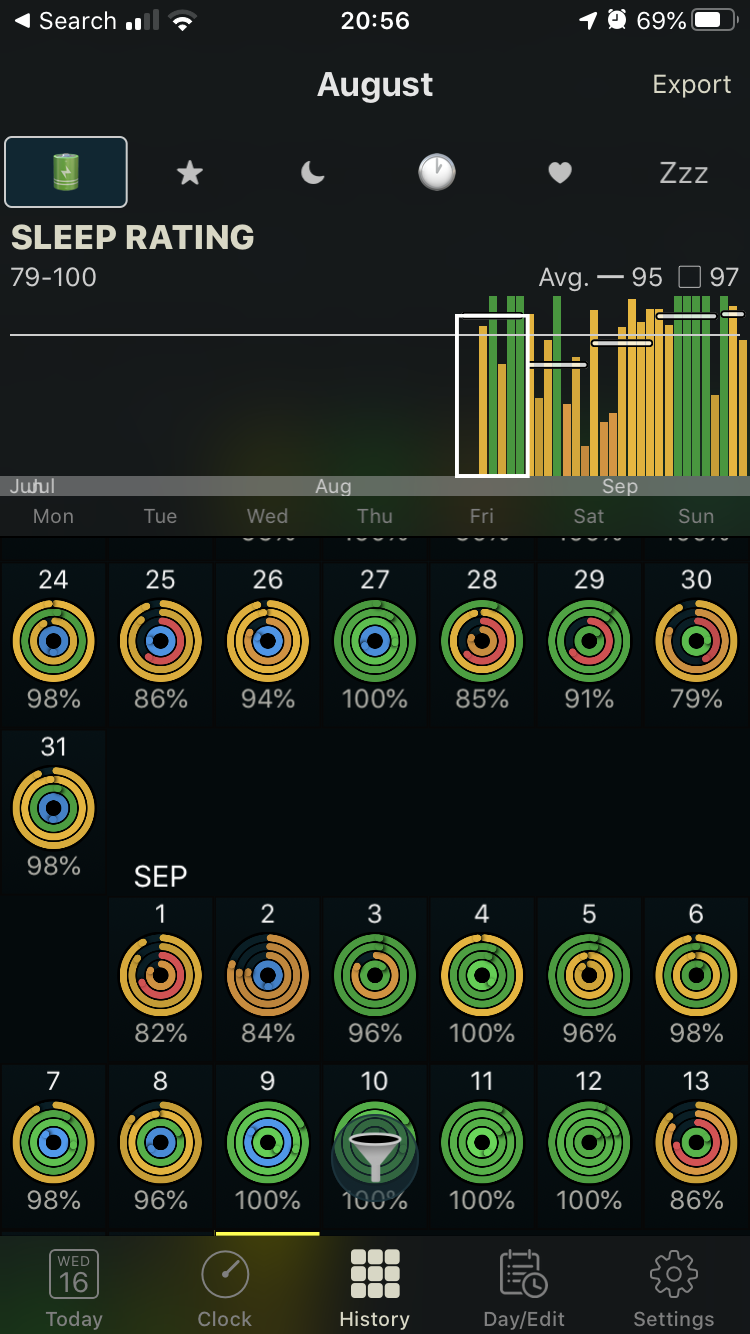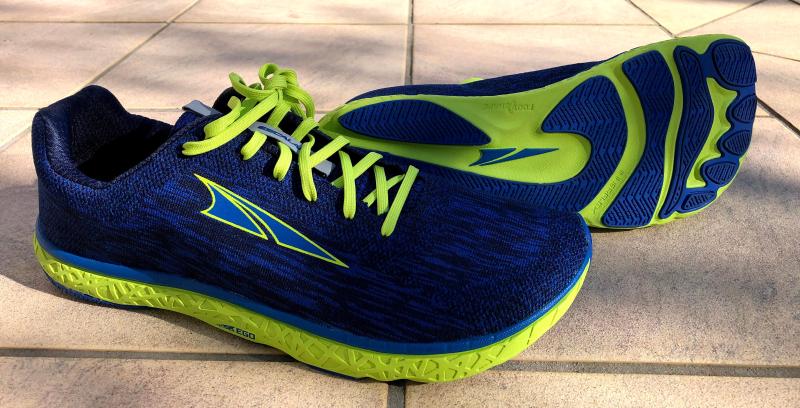Welcome back here folks, to the 204th edition of the Weekly Head Voices, examining a sample of life from Monday September 7 to Sunday September 13, 2020.
Summer is starting to make an appearance down here, albeit with a bit more subtlety, some would say difficulty, than usual.
Fortunately, the week in question offered plenty of opportunities for being outside, opportunities that some of us made grateful use of.

Figure 1: Random scene from a lunch at Guardian Peak with one of my most long-time friends who as a bonus is also brilliant company. What you see is the result of three iPhone photos stitched together with Microsoft Research’s Image Composite Editor, and the power of math.
Sleep update
With our teenager back in school, we have to get up at 5:45, mercifully only for two days of the week with the school in COVID-19-mode.
On other days we get to sleep in until 6:45. LUXURY!
(The lock-down also saved us from a few months of 5:45 wake-ups 5 time per week during the darkest part of the winter, so there’s that.)
This, together with increased pressure at work, has again brought into sharp focus my sleep hygiene.
I haven’t been doing too badly during the past months, but the current period seemed to require a tad more attention to good sleep.
After reading the disappointing news that the promised first-party (Apple, in other words) sleep-tracking in the new WatchOS 6 release was not going to be much more than tracking time in bed, I searched around for the best third-party sleep tracking app.
Well folks, after a few weeks of testing, I think that AutoSleep is it!
(Beware, there’s a straight rip-off app in the Google Play store. It’s not even in the same reality as the real thing, although the scammers have stolen a bunch of visual elements and even copy from the real autosleep website. Oh Android…)
The app appears to be almost too full of complicated-looking visual gizmos, so much so that initially I was not as positive about it. See below for an example of my sleep history overview:

However, after using it for a while, and coming to grips with the various pieces of feedback, this app has turned out to be a great tool in my quest for sleep hygiene nirvana.
Furthermore, I did have to change my watch charging habits by charging my watch in the evening hours, so that I can sleep with it on my wrist, and I also have to remember to tap the “lights out” button when I attempt to start my sleep (you don’t have to do this, but it gives more accurate tracking that way).
Now I have measurements to show how important the wind-down routine is (if I can fit in some book-reading in bed, I can fall asleep after that in almost no time); how some nights when it feels like I’m quite restless, I actually do get quite an amount of sleep; and finally how a drink or two on a weekend night can affect my average heart rate through the night (+5 beats, oof), and more.
WSL2 and nativecomp Emacs workflow update
The following is for my more nerdy readers.
After running into this comment on a github issue I am subscribed to, I learned that you can use the versatile socat tool to forward connections from a unix socket on WSL2, via the WSL bridge and a WSL1 instance, to a TCP port on localhost.
The upshot of this is that I now have a robust X11 connection from WSL2 to X410 running on my Windows laptop.
This is possible without socat, but you either need to forward ports using SSH (which I’ve done), or punch holes in the firewall, and then, as if that’s not bad enough, deal with a connection that breaks every time the laptop goes into suspend.
With the socat X11 connection in place, I decided that it was time to go further around the WSL2 bend and replace my complicated rsync-based scripts for copying source code from the Windows host to the WSL2-native filesystem with a second instance of dropbox running directly on WSL2, with a severe selective sync configuration.
By the way, after Dropbox rewrote their sync engine (in Rust), nothing else even comes close in terms of performance.
Thanks to this perfect storm of socat-X11-boosted WSL2 and MULTI-dropbox, I decided that it was finally time to commit to the new nativecomp Emacs “capable of compiling and running Emacs Lisp as native code”, so I busted out my slightly modified version of Mickey Petersen’s Dockerfile and compiled me one.
This very post is being written on native-compiled Emacs Lisp, running on WSL2, displaying via socat to X410.
#feelsgoodman
(P.S. I’ve been running like this for about three weeks, with nary an issue. The future is now.)
Keyboard update: Unicorns-with-RGB
You might remember from WHV #200 how I carefully started dipping my toes in the clickity-clackety waters of mechanical keyboards by acquiring a cheap keyboard with hot-swappable Outemu blue switches.
What I did not tell you then, was that shortly after acquiring that keyboard, I had already ordered the Womier K87 all-acrylic RGB-overload keyboard from Banggood.
My reason for ordering that specific board was not so much the lighting (WHICH IS FREAKING SPECTACULAR BUT BACK THEN I DID NOT KNOW THIS), but rather because it was the most affordable mechanical keyboard with universal(-ish) hotswappable switches.
You see, the Outemu board can only take Outemu switches, while with a board with universal sockets, you have access to a whole smorgas(key)bord of different switches!
The Womier finally arrived after slightly more than a month, with Gateron brown switches installed as I had requested.
Probably due to both the brown switches (rated 45g actuation force but probably less, tactile but not clicky) and due to the board’s far more solid composition, my typing comfort and speed on this thing are close to what I usually have on my Microsoft Sculpt ergonomic.
Because of this, I don’t swap back to the Sculpt nearly as often.
Together with the fact that the keyboard has an impressive and varied collection of intricate animated lighting patterns thanks to the RGB LED behind each and every single key, and a whole bunch of extra LEDs in the acrylic body, this leads to a great deal of typing fun.
#feelsbrightman
Running update
Back in WHV #177 I embraced the space and acquired my first pair of Altras, a pair of road shoes named Escalante 1.0, for a good price, because the 1.5 had already been released.
Recently I was again in the fortunate position to buy a pair of 1.5s for a good price, as, you guessed it, the 2.0 had already been released.
The new babies look like this:

Running in them has been super enjoyable.
(The 1.0s are at about 700km, which is usually a good time to retire them from running. Now they are just for cocktail parties and business meetings.)
On a more philosophical note, with the aforementioned improving weather, the aforementioned increased pressure at work, and the non-aforementioned abundance of mountains all around me, I have taken to randomly taking a few hours off from aforementioned work to go run in the now aforementioned mountains.
#feelslifeaffirmingman
What is your purpose?
We have a great tradition here at the WHV of revising our official and utterly complete life philosophy based on discussions with wise friends.
See for example WHV #124 where I had to add a third rule to WHV’s Two Rules for Achieving Great Success in Life, or Just Surviving, Whichever Comes First.
Quite poetically, the additional rule was “Evolve”.
(FYI, the current official WHV approach to life, the universe and everyhing is summarised in WHV #198.)
During the beautifully-surrounded lunch discussion with longest-time friend (LTF, henceforth), as depicted in the panoramic photo at the start of this post, we also spent some time talking about life directions vs. goals.
As you know, I am not a fan of life goals, instead opting for life directions.
LTF agreed with some of my reasoning, but made the valid point that goals were required to measure and maintain velocity along one’s chosen directions, or systems.
In principle we agree on this point also, but I believe that the conversation will have to continue, as we still need to define and then articulate a closed-form solution to the directions vs goals issue, or rather a guideline that can be used to determine the correct relative dosage.
Probably more important was LTF’s contribution of the concept of “purpose”.
One could argue that life directions form one’s purpose, but that would be missing an opportunity I think.
As LTF later quipped:
Purpose = the reason you get up in the morning. Goals = help you go to sleep at night.
At least in my case, I have a number of life directions, but I think a purpose is a higher-level, mostly singular, desired outcome of your life’s work.
Ideally, life directions should be set in order to orient one towards fulfilling one’s purpose, with continuously evolving goals punctuating the way there.
What is your purpose?